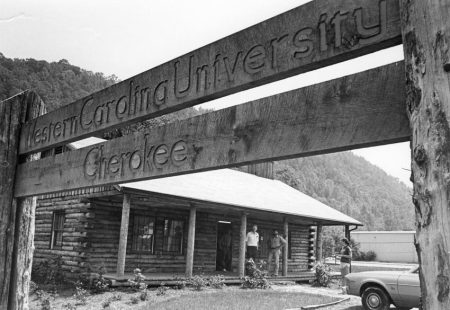Tennessee River Park: A Visionary Template for Asheville’s River Arts District

|
| Members of AARRC walk across the famous Walnut Street footbridge which connects the Market Street District to the North Side Bluff View Arts District, and the Battery Place neighborhood. Photo: Urban News |
By C. E. Taylor
On August 26 The Urban News was invited to travel with the Asheville Area Riverfront Redevelopment Commission (AARRC) to tour the beautiful Chattanooga, TN Riverpark District, as a way to educate the commission on possible redevelopment ideas and visionary planning.
Once in Chattanooga, the group was given a tour of the Riverpark by Mr. Jim Bowen, chair of the River City Company on the banks of the Tennessee River in Chattanooga. This captivating riverfront park encompasses all the beauty of the Tennessee River and the historical attributes located on the shores of the present-day city.

|
| The Southern Belle paddle riverboat with the P.R. Olgiati bridge in the background. Photo: Urban News |
The Chattanooga Riverpark began in 1982 as community-based project
whose vision was to reconnect the city with the river. The plan called
for development along the riverfront that would comprise retail
businesses, recreation modules, and housing, all developed with the
intent of attracting citizens, businesses, and visitors to the shores of
the river.
The 150 acres of Tennessee Riverpark provide an expansive area for
activities ranging from jogging to roller blading to grilling. For avid
lovers of nature there are 13 miles of trails that encompass the
perimeter of the riverfront properties. It was estimated to take 25
years for the build-out to occur. With much input from area citizens the
Riverpark has become a successful facet of Chattanooga’s devout
revitalization effort and a enjoyable “river renaissance.”
In the Market Street district you are able to see the Tennessee
Aquarium on Ross’s Landing. The aquarium is considered to be the
catalyst for the inception of the Tennessee Riverpark, which opened in
1993. Ross’s Landing is also depicted as a historic site, as it denotes
the starting point of the “Trail of Tears.” Cherokee homage was evident
by the Bronze inscription on the cornerstone pillar which read “Where they crossed.”

|
| Stephanie Monson (left), Urban Planner for the City of Asheville, talks with AARRC members about the Chattanooga riverfront. Photo: Urban News |
Renaissance and Coolidge parks have been revered as the key element to
bringing commercial vitality to the Northside district of Chattanooga,
along with the refurbishing of the Walnut Street Bridge in 1993. The
Walnut street bridge is a remarkable footbridge connecting the Market
Street venues to the Northside district, including the Bluff View Arts
District through the Battery Place neighborhood. These areas are a
must-see attraction when visiting Chattanooga, as they provide a glimpse
of the unique heritage and history of the Tennessee River as well as
Chattanooga’s commitment to maintain these landmark .
Future plans for River City include extending the riverwalk from Ross’s
Landing in downtown Chattanooga to the base of Lookout Mountain and out
to the new Moccasin Bend National Park. New greenways are now being
built to connect the riverfront amenity along both North and South
Chickamauga Creek and to many neighborhoods in the area.
While the Tennessee River Park was conceived as a way for people to
reconnect with the river, happily, it has allowed residents of
Chattanooga the opportunity to reconnect with one another. We are hoping
that future plans for Asheville’s riverfront district will developed
with forethought planning, and a way to connect our Asheville
communities together.








